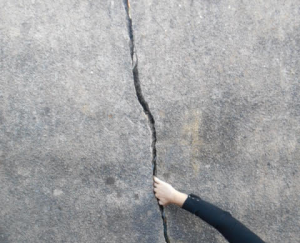Dream Home or House of Horrors?
You’ve fallen in love with your next home. You’ve had a few viewings, imagined where all your furniture is going to go, and joy, oh joy, your offer has been accepted! But, is there a little worry niggling at the back of your mind? Perhaps it would be best to make sure that there are no nasty surprises lurking on moving-in day?
In fact, you could and should commission a survey. Statistics show that 42% of UK home owners have needed unexpected works doing to their property within 12 months of moving in.
In this blog, we are looking at some of the less obvious things our surveyors check for, and give advice on, when commissioned to undertake a survey. You may immediately think about issues like structural movement or damp, but other defects may be less obvious and it’s always better to be financially and mentally prepared for any possible remedial building work.
Nasty Surprise Number One:
Blocked Drains – Yes, it’s all got to go somewhere! Blocked pipes, drains and sewers can be expensive to put right, and can be very unpleasant especially if its someone else’s mess – extremely stressful on your first day. They can also cause secondary issues such as rat infestation, and if leaks have occurred, can result in problems with the foundations. Perhaps the property isn’t on mains sewerage and there is a septic tank to consider? If there is a problem, it is also important to be aware of your responsibilities and where your obligations end and the water company’s begin.
Nasty Surprise Number Two:
Retaining Wall Defects – Home purchasers often underestimate the importance of retaining walls particularly if they are garden boundaries. But, any defects such as cracks, bulges and movement in a retaining wall structure can indicate a serious and potentially very expensive and dangerous problem.
In South Wales this is something we see regularly due to the sloping topography. Recently, we advised a client about a defective 10ft high garden retaining wall at a terraced property she was hoping to buy. The wall was bulging significantly and to put it right would involve carting tons of earth and debris through the house itself. In this case, our client considered that they had had a lucky escape.
Nasty Surprise Number Three:
Black Mould – Drying clothes indoors, showering, cooking and even just living and breathing causes a lot of moisture. In homes with inadequate heat and ventilation this can cause condensation and black mould to form in ‘cold spots’. Common ‘cold spots’ for black mould growth include the corners of bedrooms, bathroom ceilings and behind furniture. Black mould is unpleasant to look at and can cause health issues such as respiratory problems. If present, you may need to consider the cost of updating the heating system and insulation, improving ventilation and redecorating.
Nasty Surprise Number Four:
Wood Boring Beetle (“woodworm”) – There are several different species of insects that can live in our homes and cause damage to timbers. The most commonly occurring in the UK is the Common Furniture Beetle which attacks softwoods and the sapwood of European hardwoods.
Different species require different treatments and it is important to establish whether any damage is historic or ongoing. Woodworm like damp conditions and hate central heating, so in older houses sometimes those little holes were caused before central heating was introduced or maybe the problem has already been treated. Knowledge is key, and it is important that if active woodworm is identified that it is treated quickly by an appropriate timber specialist.
Nasty Surprise Number Five:
Unsupported Chimney Stack – This can be a sneaky one! Everyone wants to maximise the space they have and sometimes it makes sense to remove a redundant chimney breast to make more living space. The problem comes when the chimney breast has been removed from the ground floor and maybe the first floor too, but up in the loft and out on the roof there remains a huge 4 pot chimney and an awful lot of now unsupported bricks! The solution is of course to either remove the chimney in its entirety (this may not always be possible or desirable) or provide support for the remaining chimney structure. Ouch, more expense!
For some people, discovering that your potential new home has a problem may be a deal breaker but with good advice, and in the full knowledge of the issue, that doesn’t necessarily have to be the case. In fact, we have to admit to having had 2 or 3 of these ‘nasties’ in our own homes and lived to tell the tale!
Here at Jones Battye, we offer several different levels of RICS Home Surveys. Please see our RICS Home Surveys page for details of what each survey type includes. Give us a ring for advice or to discuss your requirements further and we will be pleased to help.






